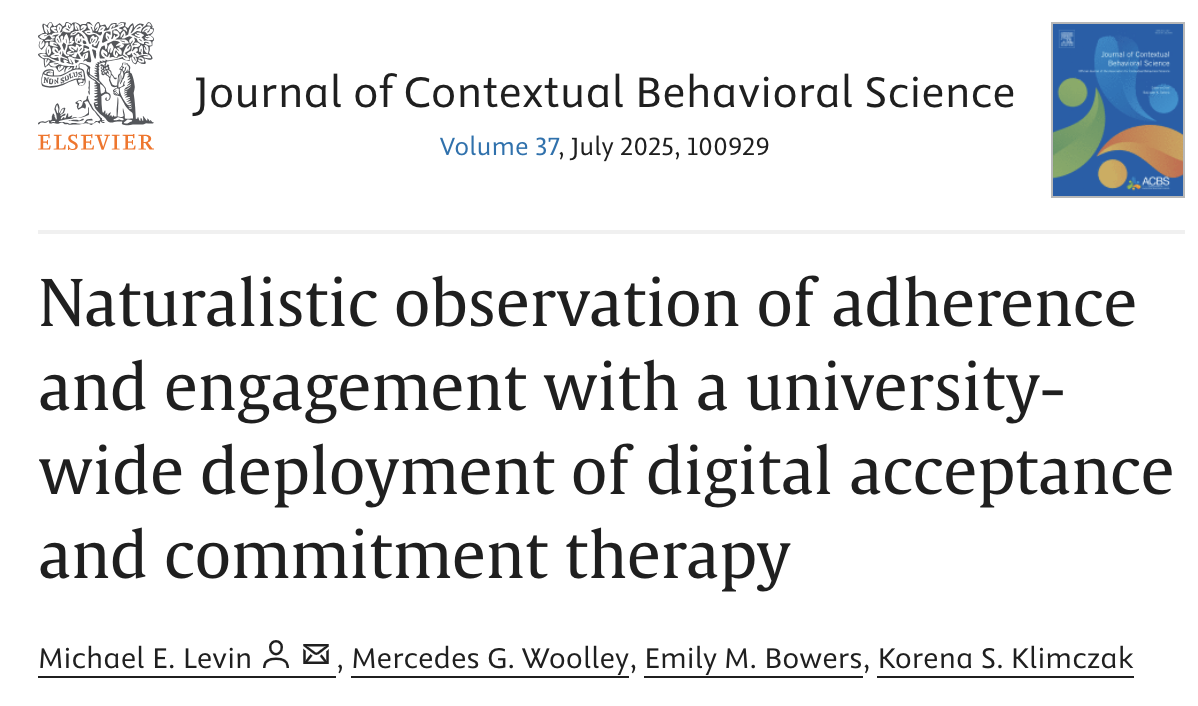Journal of Contextual Behavioral Science (JCBS)
Volume 37, July 2025
Authors
Michael E. Levin, Mercedes G. Woolley, Emily M. Bowers, & Korena S. Klimczak
Key Findings
- Naturalistic research on use of digital interventions is critically needed.
- 1896 students enrolled in digital ACT deployed as a free university service.
- Only 57% ever logged in; 7% completed half and 3% completed the entire program.
- Users who completed modules were highly engaged based on several variables.
- Digital ACT may have low adherence, but a highly engaged subset in real world use.
Abstract
Naturalistic research on “real world” usage of digital mental health interventions (DMHIs) is critical for DMHIs to meet their goal of increasing access to mental health services. DMHI adherence is much lower in naturalistic settings versus controlled research, but less is known about dimensions of engagement beyond adherence to module completion or how these patterns extend to DMHIs based on acceptance and commitment therapy (ACT). This study reported the adherence and engagement patterns among 1896 university students who registered for a free ACT DMHI service deployed at a single university from 2019 to 2023. Adherence was very low with only 57 % logging into the program even once, 7 % completing half of modules, and 3 % completing the entire program. However, engagement was high among students who adhered to a given module as indicated by high rates of module exercise completion, at least partial homework completion, spending at least 10 min per module, and program satisfaction. Predictors of higher adherence included higher engagement, being older, and lower depression and anxiety. Overall, results add to research highlighting adherence challenges when deploying DMHIs as services outside of controlled research, which are potentially worsened with successful efforts to increase enrollment and reduce barriers such as cost. At the same time, the findings highlight how a subset of individuals adhere to and engage in DMHIs in a way that is likely to provide benefits.
